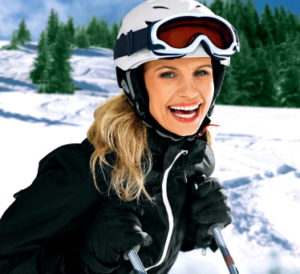As a chiropractor in Chicago we need to make sure our patients take the proper precautions when taking part in physical sports and activities. Skiing is one of the most exhilarating sports for almost any age. Unfortunately, the excitement and fun is all too often marred by accidents that can range from the inconvenient to the deadly. Although one can exercise good judgment, be in excellent shape and be an expert skier, there is no way to avoid the significant risk of accidents on the slope due to careless skiers, unforeseen obstacles and equipment failure.
It is in those brief moments of chaos where head protection becomes the deciding factor between getting back up and being evacuated by the ski patrol. A good helmet protects not only against the blunt force trauma of high-speed head-to-ground contact but also the puncturing wounds from head-to-tree collisions.
Chiropractors can help when choosing a ski helmet, make sure the size and fit are perfect for your head. Determine your helmet size by measuring your head’s circumference (a measuring tape works quite nicely). When trying out helmets, make sure it fits properly by rolling the helmet off of your head. If the skin of your face moves then the helmet fits properly. Also make sure the helmet is not too tight, as any pressure points while fitting the helmet will cause significant pain on the slopes. Even the chinstrap should be relaxed and comfortable, enough to hold the helmet on but not to cause any pressure.
It is also important that the back of the helmet not touch the back of the neck even when the head is fully titled back as this may cause injuries during a crash.

If you plan to order online then be aware that helmets are designed for varying head shapes as well as sizes. You may need to order a variety of styles and return the ones that don’t fit well. Have a friend check the shape of your head to determine if you have an oval, round or “roval” head.
Your ski goggles should also fit the helmet perfectly. While wearing the helmet, you should be able to fit the goggles properly without any exposed space on your forehead and a minimum amount of exposed space on the sides. The goggles should not overlap the helmet on any side. Make sure the helmet has a clip in the back to hold the goggle strap otherwise you may find it slipping off at the worst possible moment.
Helmets not only provide vital protection during collisions but also provide protection from the cold and adverse weather conditions. You can find helmets that provide ear protection and other comfort features, such as vents for warmer weather skiing
Lastly, for an extra bit of fun and some long-term memories, helmets allow you to attach cameras so that you can record your ski runs. What better way to enjoy your runs than show them off on video!
